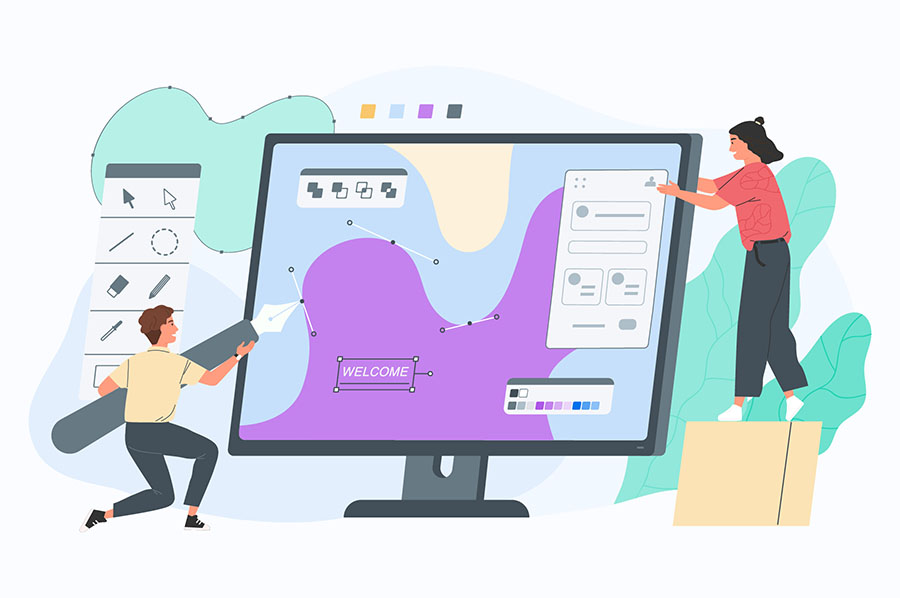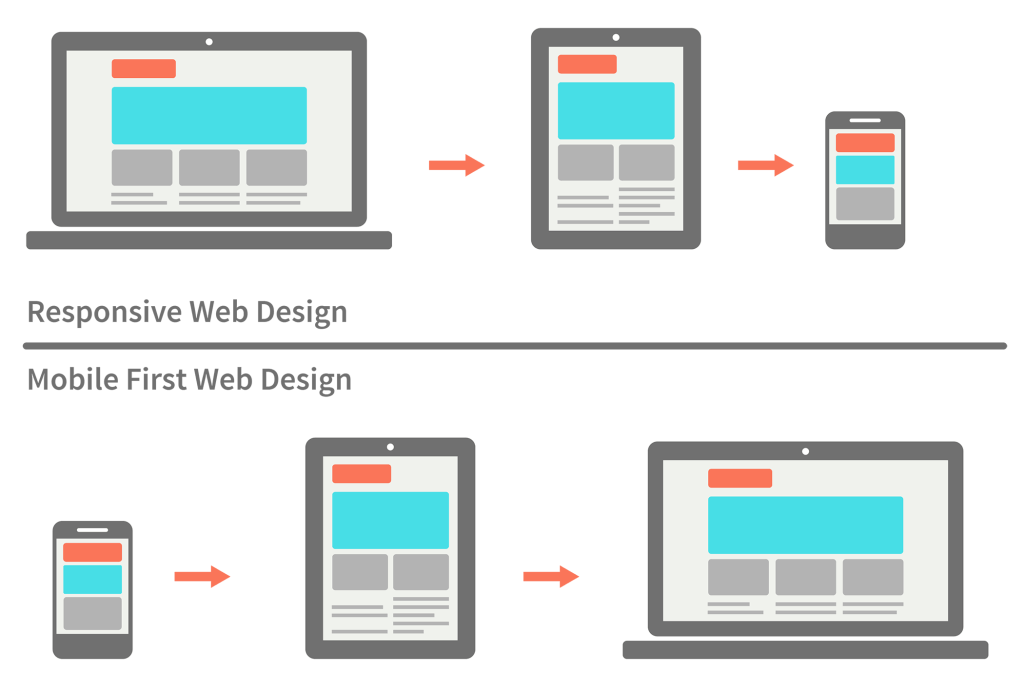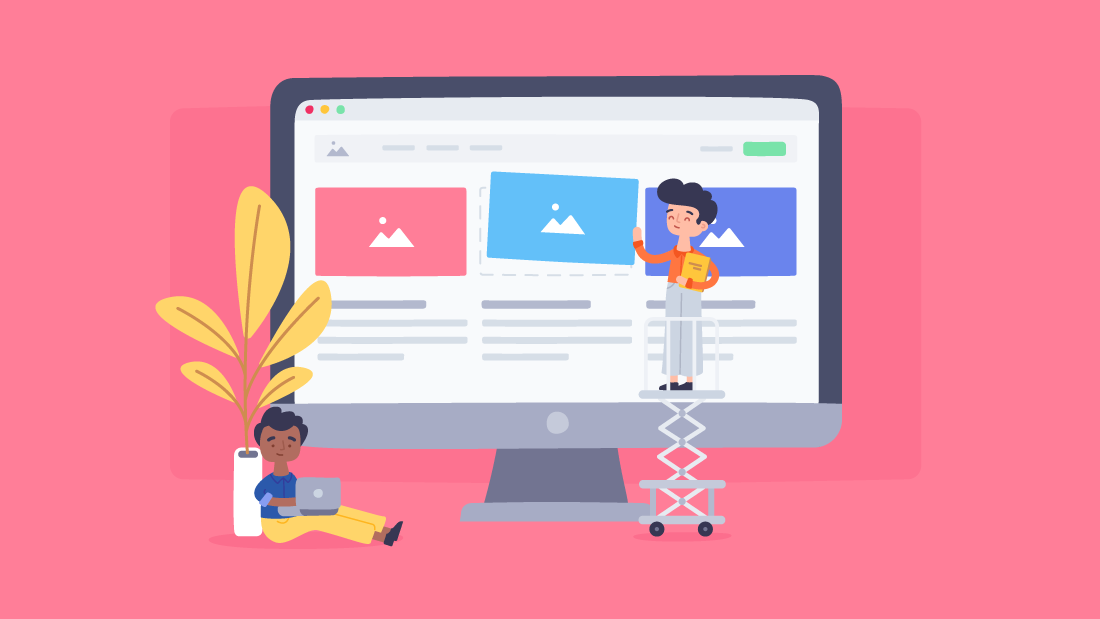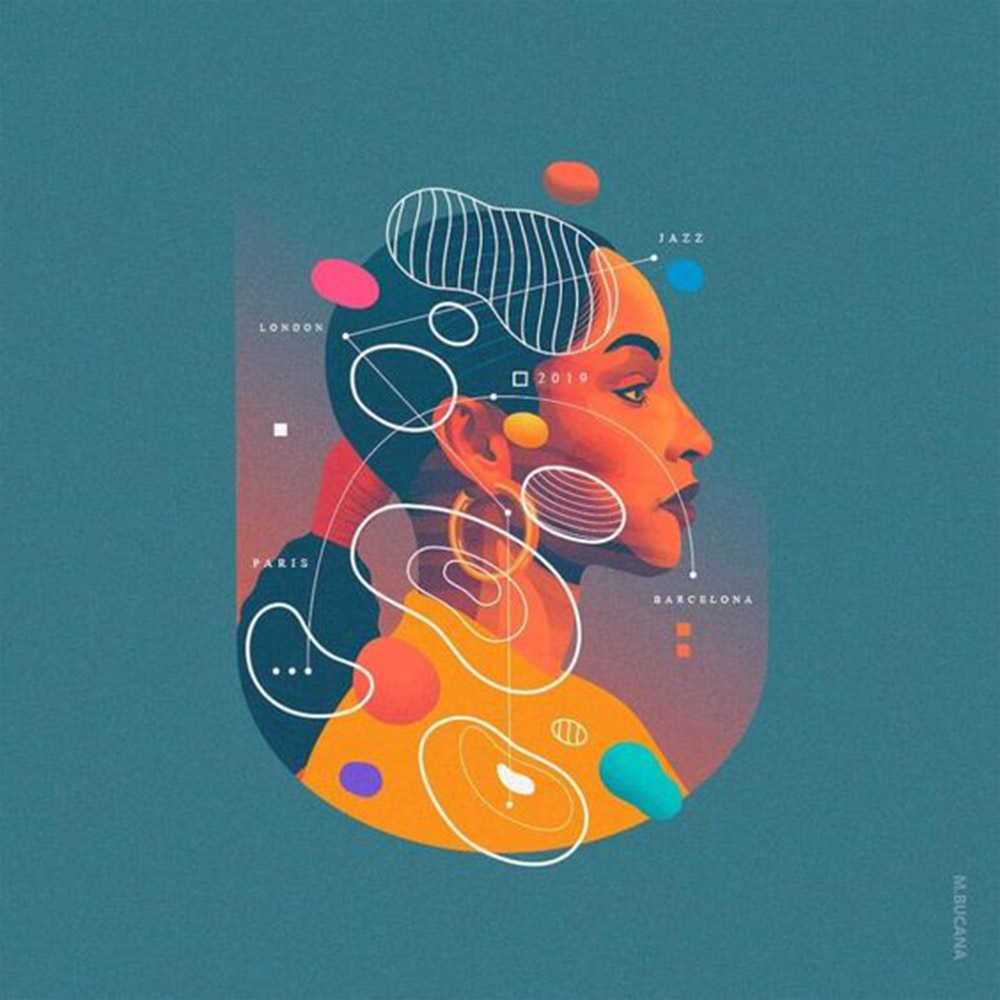Web Design
1. What is Web Design and why is it so important?
- Web design is aimed at the appearance of all sites that are on the Internet. Until 2010, web design was entirely or mainly based on desktop sites, but since then, responsive design for phones, tablets, etc. has become increasingly important. The look of a site is very important because it represents the vision of a company, a person, or a certain topic. The more beautiful and functional and easy to use the site is, the more likely it is that more users will be satisfied with its use.


2. Basic steps in design development?
- Every web design starts with creating a wireframe. But what is a wireframe and what is it for? The wireframe serves as a block sketching of the main elements in the design. This is the easiest way to build the foundation of the site.
- Color palette selection. Every company has its brand identity. This consists of a logo, fonts and other unique elements that set the company apart from the rest. Like a logo and a font, a brand identity also has a color palette. It usually consists of 2 primary and 2 secondary colors. These colors are used as primary colors in web design as well.
- Selection of good fonts. Each font should match the style of the site and the theme to which the site is aimed. Most often, so-called Sans Serif fonts are used on websites. What is the difference between Serif and Sans Serif. Serif fonts have no „decorations“ at the end of the letter, making it much easier to read on a screen. There are also exceptions, such as using a Sans Serif font in a title or an element that needs to be highlighted.
- Prototyping can be said to be the last major element of creating a successful Web Design. In prototyping, all the functionalities of the website are included, thereby making references to other pages and functionalities of the website.
3. Inspiration
- Designers are artists. They are creative people who need inspiration daily so that they can draw more and more ideas. However, this is not always easy, because sometimes finding a design in which even some elements would be useful to you is quite difficult. Most often, designers are inspired by sites such as Pinterest, Behance and other sites related to uploading or viewing author’s content not only for professionals, but also for amateurs and even end users.


4. Why mobile first design is so important?
- What does the phrase “Mobile First” mean and why is it so important nowadays. According to studies, on average, about 54-55 percent of the Earth’s population visits sites through their mobile phone, about 42-43 through a desktop version, and about 5 percent through a tablet. This means that sites are more visited in their mobile version than in the desktop version. For this reason, in recent years, Mobile First design has taken a leading position in the creation of the initial design for a given website. According to other studies, some users have never seen the desktop version of their most visited sites in their daily life.
5. Prototyping
- Few people really know what prototypes do and why they are important to a design. In a User Interface designer creates a design breakdown of each design. It consists of several modules, the final one being the prototype. It is the fully finished design, with each button performing its function. In this way, it can be presented to the client and passed on to the programmers to make their job of building the site easier.


6. Feedback from users or testers
- Part of the Designers are divided into User Interface, or better known as UI and User Experience UX. User Interface designers are concerned with crafting the overall look of the design. This includes what color the button should be, how big the font should be on it, and everything else that includes the overall identity of the site. User Experience designers, on the other hand, deal with creating the rough Wireframe of the designs. This means, for example, that this button should be placed in a certain place on the screen, not just because the designer likes it that way, but because research is being done by customers and non-designers. In this way, it is easiest to see how the mass of users would find it easier to use the site, application or software being developed. After a series of tests and the so-called Usability Test, the results are brought out about the wishes and views of the end users about the design. The designer’s job is then to improve his design based on user feedback.
7. Can we become web designers?
- – This is a very complex question that does not have a concrete answer. The answer can be YES and NO, because design is a matter of attention to detail and creative thinking. If you don’t have these skills, it will be very difficult for you to become a successful designer. But on the other hand, all this can be learned with a lot of persistence and training in the field of design.

8. Good practices in making a successful design
- There are many good practices in creating a successful design. First, start with large-scale research of the market and the area for which the site will be targeted. Then to follow the rules and hierarchy of designs. And finally, to build and test the final product with as many people or testers as possible.
9. How to make our design unique?
- In the design world, it is increasingly difficult for our design to be unique and unrepeatable, but not impossible. The reason why more and more designers copy from each other is the design trends and trends worldwide and what is fashionable and successful for sale. As a mentor of mine used to say, „Be boring designers.“ Boring design sells, fancy design doesn’t appeal to consumers.

Basics of Web Design Animation
Glossary
- Wireframe noun / a basic plan for a website that shows the type of information that it will contain and how it will be arranged / Web designer start creating wireframe for his new project
- Serif noun / a small line that is added to a printed letter in certain typefaces / Serif fonts are used in books
- Sans-Serif Font noun / any typeface in which the letters do not have serifs decoration added to them / Web designer mainly use Sans-Serif fonts for their sites
- Prototyping noun / the activity of making basic models or designs for a machine or other industrial product / UI designers prototype their projects to create more interactive vision of the website or software
- User Experience noun / the experience of someone using a product, system, or service, for example whether they find it enjoyable and easy to use / User Experience is so important for end users, because it is based on their psychology needs
- User Interface Designer noun / the way in which the information on a computer, phone, etc. and instructions on how to use it are arranged on the screen and shown to the user / User Interface designers bring design to life
- Mobile First – is a phrase used to name the way designers work / Web designers and developers create a mobile version first because of user usage
- Inspiration noun / someone or something that gives you ideas for doing something / Designers are inspired by platforms built for content creators
- Color Palette noun / the range of colours that a painter, photographer, film maker, etc. usually uses / Color Pallette is so important for every design, photography or painter.
- Brand Identity noun / a set of qualities that people connect with a particular company or a product sold under a particular name, that make it different from other companies or products / Every company should or has its own Brand Identity
Resources:
- Video: YouTube.com
- Text information: Design Courses, Wikipedia, Videos
- Words description: Cambridge University Dictionary
- Pictures in presentation: Google
